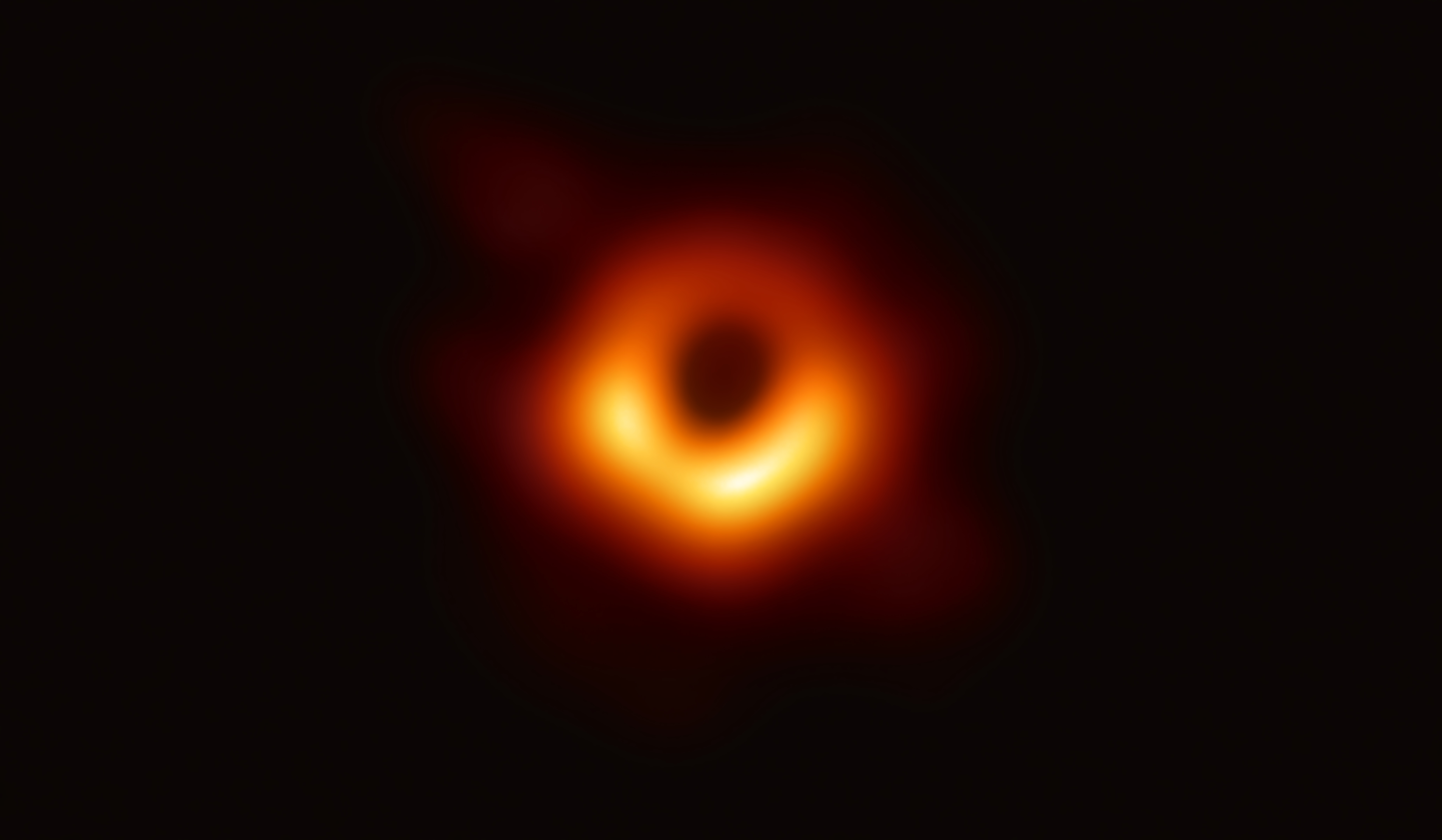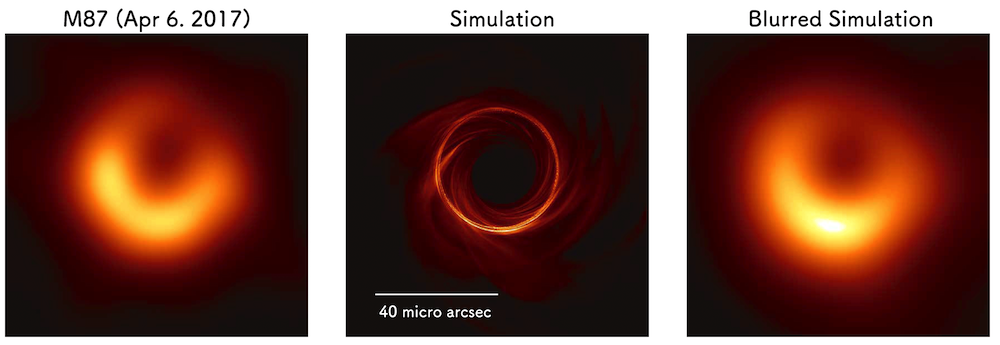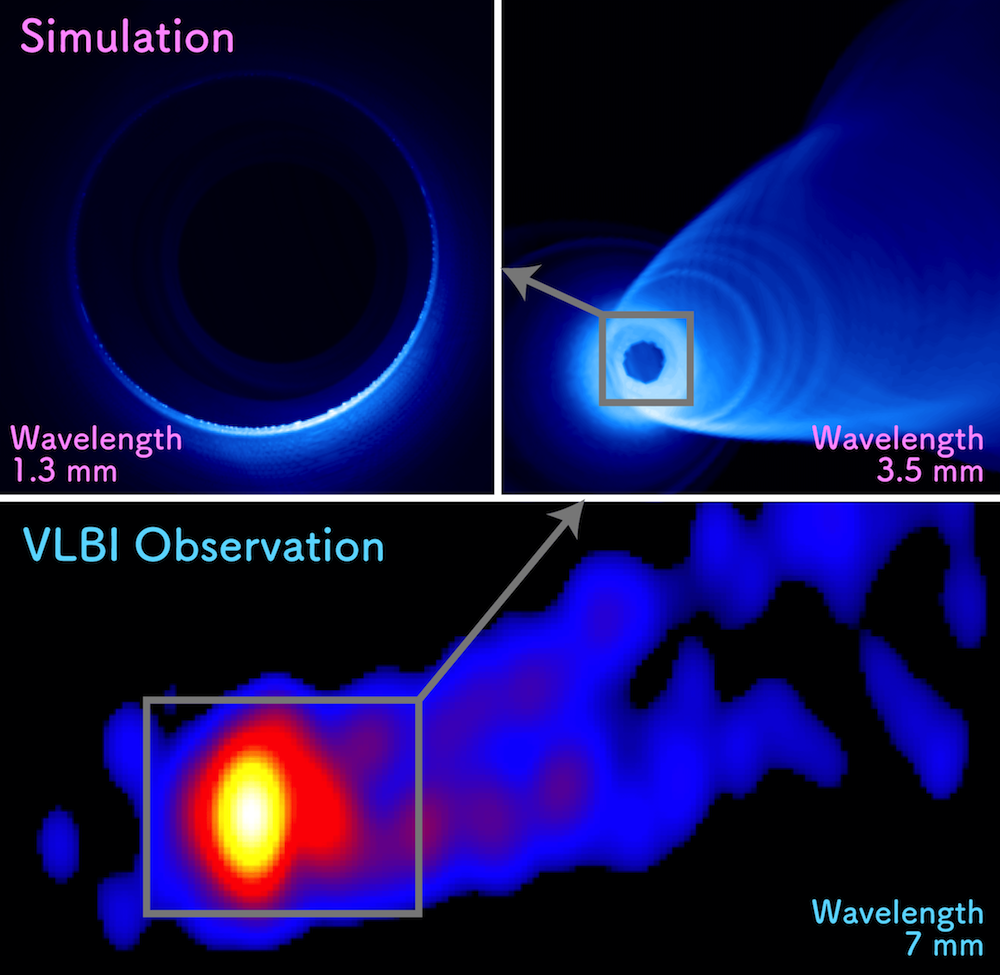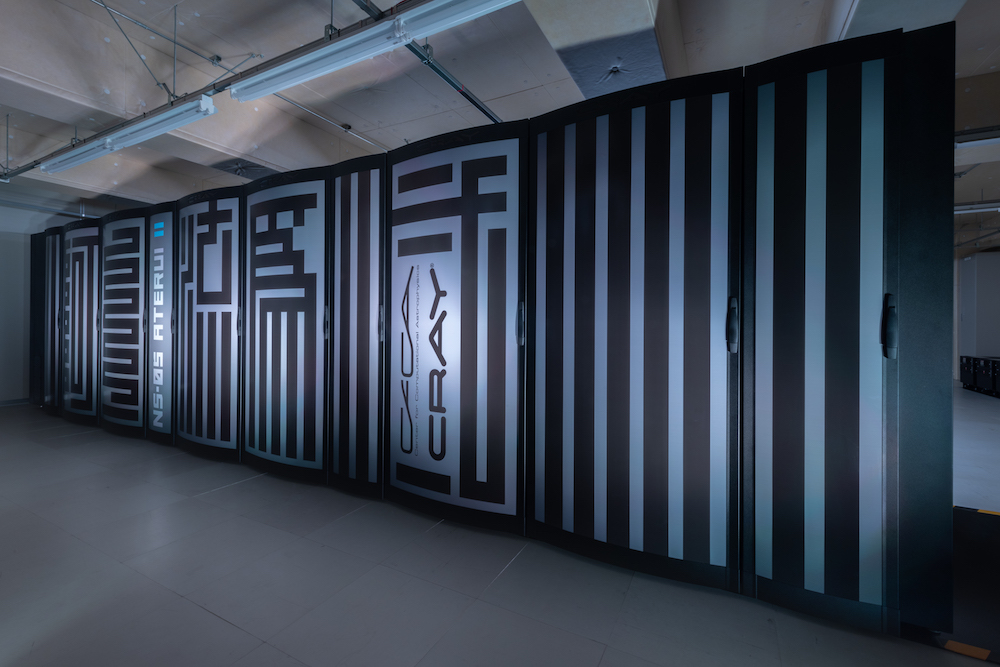Capturing an image of a black hole has been one of the greatest missions of modern astronomy. The Event Horizon Telescope (EHT) is an interferometer array of eight radio telescopes spread across the Earth, designed to obtain images of a black hole. The first results of the EHT observations in 2017 were released today. The EHT targeted the super-massive black hole at the center of the elliptical galaxy M87, and captured its “black hole shadow” and “photon ring.” For more details please see NAOJ press release “Astronomers Capture First Image of a Black Hole”.

Credit: EHT Collaboration
Download: [Large (JPG, 643 KB)],[Small (JPG, 45 KB)]
What can we learn from this image taken by the EHT? The space-time around a black hole is distorted by its strong gravity. In addition, if the black hole is spinning, the black hole shadow and the photon ring should have asymmetrical shapes because space-time is dragged in the spin direction. Comparing the observed image to simulation results provides the mass and spin direction of the black hole.
In one of the six papers of EHT results appearing in the Astrophysical Journal Letters, the mass and spin of this black hole are discussed by the EHT theoretical and simulation working group. They performed several simulations with supercomputers considering general relativity and magneto-hydrodynamics, and they compared the observed results to the simulations. This confirmed that the mass of the super-massive black hole at the center of M87 is 6.5-billion times that of the Sun. The asymmetrical shape of the photon ring indicates that the black hole spins such that the southern side is approaching us. This is the first time that a black hole's spin information has been obtained.

Credit: EHT collaboration, (2019) ApJ.
Download: [Large (PNG, 2.4 MB)],[Small (PNG, 294 KB)]
Tomohisa Kawashima at the National Astronomical Observatory of Japan (NAOJ) is a member of the theory and simulation research working group. He developed an advanced and accurate general relativistic radiative transfer code for one of the EHT simulations, and compared the simulated models with the observational data. In addition to the work appearing in the report, the Japan-Taiwan simulation team including Kawashima also calculated the general relativistic magneto-hydrodynamics and radiative transfer while considering the detailed structure around M87’s black hole. Further comparison of their simulation results and the EHT image is explicitly stated as a future project in the report. Kawashima explains the significance of his research, “We succeeded in obtaining evidence of a rotating supermassive black hole in M87 with the EHT observations and a large number of simulations. From observations by the East Asian VLBI Network, we know this black hole launches a jet. We will construct a model which can explain both the EHT result and the jet observation to reveal the spin of the black hole.”

Credit: Tomohisa Kawashima (NAOJ), Masanori Nakamura (ASIAA), EAVN AGN observation working group.
Download: [Large (PNG, 1.4 MB)],[Small (PNG, 655 KB)]
Kawashima’s simulation was performed with the supercomputer “ATERUI II” at NAOJ. This research was supported by JSPS KAKENHI Grant Numbers JP18K13594, the NINS Project of Formation of International Scientific Base and Network (Grant Number 01421701), MEXT as a “Priority Issue on the post-K computer” (Elucidation of the Fundamental Laws and Evolution of the Universe) and JICFuS.
[Research Paper]
Title:First M87 Event Horizon Telescope Results V: Physical Origin of the Asymmetric Ring
Journal: Astrophysical Journal Letters
Authors: The Event Horizon Telescope Collaboration
DOI: 10.3847/2041-8213/ab0f43
[Supercomputer Used in This Research]
 This research utilized the NAOJ supercomputer ATERUI II (Cray XC50) for general relativistic radiation transfer simulations around a black hole. ATERUI II is operated at NAOJ Mizusawa Campus (Oshu, Iwate) with a theoretical peak performance of 3.087 Pflops. (Image Credit: NAOJ)
This research utilized the NAOJ supercomputer ATERUI II (Cray XC50) for general relativistic radiation transfer simulations around a black hole. ATERUI II is operated at NAOJ Mizusawa Campus (Oshu, Iwate) with a theoretical peak performance of 3.087 Pflops. (Image Credit: NAOJ)
[For the Use of Contents in This Website]
- Contents are to be used with a clear indication of its copyright (e.g. (c) NAOJ.)
- If you would like to use the contents found in this web site, please follow Terms of Use of the Website of NAOJ.
[Related Links]
NAOJ Press Release "Astronomers Capture First Image of a Black Hole — Japanese researchers contribute to paradigm-shifting observations of the gargantuan black hole at the heart of distant galaxy Messier 87"
NAOJ ALMA Telescope Press Release "Astronomers Capture First Image of a Black Hole — Japanese researchers contribute to paradigm-shifting observations of the gargantuan black hole at the heart of distant galaxy Messier 87"
Event Horizon Telescope
